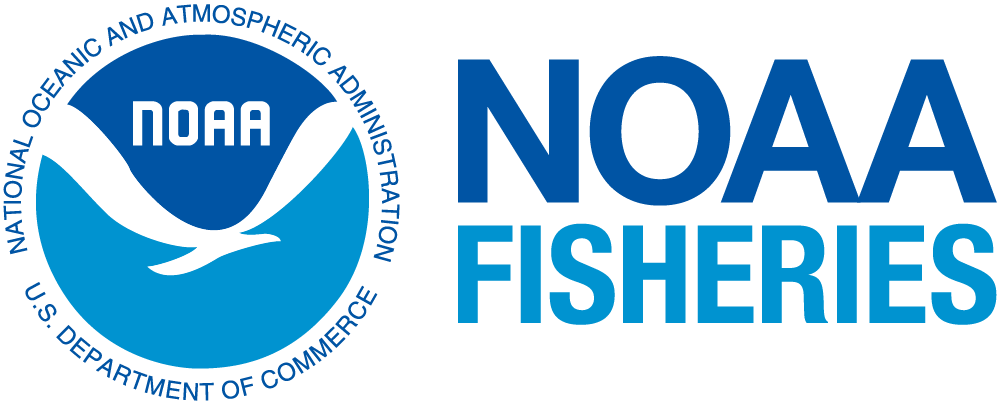This code is always in development. Find code used for final products of this code in releases.
Emily Markowitz (Emily.Markowitz AT noaa.gov; @EmilyMarkowitz-NOAA)
Chris Anderson (Christopher.Anderson AT noaa.gov; @ChrisAnderson-NOAA)
And previously,
Caitlin Allen Akselrud (caitlin.allen_akselrud AT noaa.gov; @CaitlinAkselrud-NOAA)
Liz Dawson (Liz.Dawson AT noaa.gov; @liz-dawson-NOAA)
Alaska Fisheries Science Center,
National Marine Fisheries Service,
National Oceanic and Atmospheric Administration,
Seattle, WA 98115
These scripts create daily survey station daily temperature and anomaly plots as the ships work their way through the Bering Sea. These ships are conducting NOAA Fisheries’ Alaska Fisheries Science Center’s fisheries independent surveys in the Eastern Bering Sea. Scripts pull temperatures from google drive, entered by FPCs at sea, create daily maps and composite gifs, and then push the maps to google drive for the communications team. These plots are displayed on the AFSC website
- Progress and temperature maps landing page
- 2024 Eastern Bering Sea Bottom Trawl Survey
- 2024 Aleutian Islands Bottom Trawl Survey
- 2023 Eastern and Northern Bering Sea Bottom Trawl Survey
- 2023 Gulf of Alaska Bottom Trawl Survey
- 2023 Temperature Anomalies and Cold Pool Estimates from Bering Sea Bottom Trawl Surveys
- 2022 Eastern and Northern Bering Sea Bottom Trawl Survey
- 2022 Aleutian Islands Bottom Trawl Survey
- 2021 Eastern and Northern Bering Sea Bottom Trawl Survey
- 2019 Eastern and Northern Bering Sea Bottom Trawl Survey
- 2018 Eastern Bering Sea Bottom Trawl Survey
- 2017 Eastern and Northern Bering Sea Bottom Trawl Survey
- How to set up the task scheduler
- Files are saved to our internal dev FTP server and google drive.
- Troubleshooting: if the task scheduler fails to run the code, but you can run the script in R or Rstudio, you may need to update Pandoc. If you are on a NOAA machine, ask IT to install the .msi file for you. Close and reopen everything and try again.
Find more plot examples here.
Mean bottom temperatures in the NOAA Fisheries eastern (1982-2022; 40 years) and northern Bering Sea (2010-2022; 5 years) Bottom Trawl Surveys. Credit: NOAA Fisheries. Ocean bottom temperature anomaly of the mean bottom temperatures from the eastern (1982-2022; 40 years) and northern Bering Sea (2010-2022; 5 years) bottom trawl surveys compared to their respective 2023 survey stations. Credit: NOAA FisheriesLearn more about these surveys and ocean temperatures around Alaska (Hoff, 2016; Markowitz et al., 2023, 2023; Rohan et al., 2022; Von Szalay et al., 2023; Von Szalay and Raring, 2018).
Hoff, G. R. (2016). Results of the 2016 eastern Bering Sea upper continental slope survey of groundfishes and invertebrate resources (NOAA Tech. Memo. NOAA-AFSC-339). U.S. Dep. Commer. https://doi.org/10.7289/V5/TM-AFSC-339
Markowitz, E. H., Dawson, E. J., Anderson, A. B., Rohan, S. K., Charriere, N. E., Prohaska, B. K., and Stevenson, D. E. (2023). Results of the 2022 eastern and northern Bering Sea continental shelf bottom trawl survey of groundfish and invertebrate fauna (NOAA Tech. Memo. NMFS-AFSC-469; p. 213). U.S. Dep. Commer. https://doi.org/10.25923/rt50-th19
Rohan, S., Barnett, L., and Charriere, N. (2022). Evaluating approaches to estimating mean temperatures and cold pool area from AFSC bottom trawl surveys of the eastern Bering Sea (NOAA Tech. Memo. NMFS-AFSC-456; p. 42). U.S. Dep. Commer. https://doi.org/10.25923/1wwh-q418
Von Szalay, P. G., and Raring, N. W. (2018). Data report: 2017 Gulf of Alaska bottom trawl survey (NOAA Tech. Memo. NMFS-AFSC-374). U.S. Dep. Commer. https://doi.org/10.7289/V5/TM-AFSC-374
Von Szalay, P. G., Raring, N. W., Siple, M. C., Dowlin, A. N., Riggle, B. C., and Laman, E. A. and. (2023). Data report: 2022 Aleutian Islands bottom trawl survey (AFSC Processed Rep. 2023-07; p. 230). U.S. Dep. Commer. https://doi.org/10.25923/85cy-g225
If you see that the data, product, or metadata can be improved, you are invited to create a pull request, submit an issue to the GitHub organization, or submit an issue to the code’s repository.
This repository is a scientific product and is not official communication of the National Oceanic and Atmospheric Administration, or the United States Department of Commerce. All NOAA GitHub project code is provided on an ‘as is’ basis and the user assumes responsibility for its use. Any claims against the Department of Commerce or Department of Commerce bureaus stemming from the use of this GitHub project will be governed by all applicable Federal law. Any reference to specific commercial products, processes, or services by service mark, trademark, manufacturer, or otherwise, does not constitute or imply their endorsement, recommendation or favoring by the Department of Commerce. The Department of Commerce seal and logo, or the seal and logo of a DOC bureau, shall not be used in any manner to imply endorsement of any commercial product or activity by DOC or the United States Government.
Software code created by U.S. Government employees is not subject to copyright in the United States (17 U.S.C. §105). The United States/Department of Commerce reserve all rights to seek and obtain copyright protection in countries other than the United States for Software authored in its entirety by the Department of Commerce. To this end, the Department of Commerce hereby grants to Recipient a royalty-free, nonexclusive license to use, copy, and create derivative works of the Software outside of the United States.
U.S. Department of Commerce | National Oceanographic and Atmospheric Administration | NOAA Fisheries










